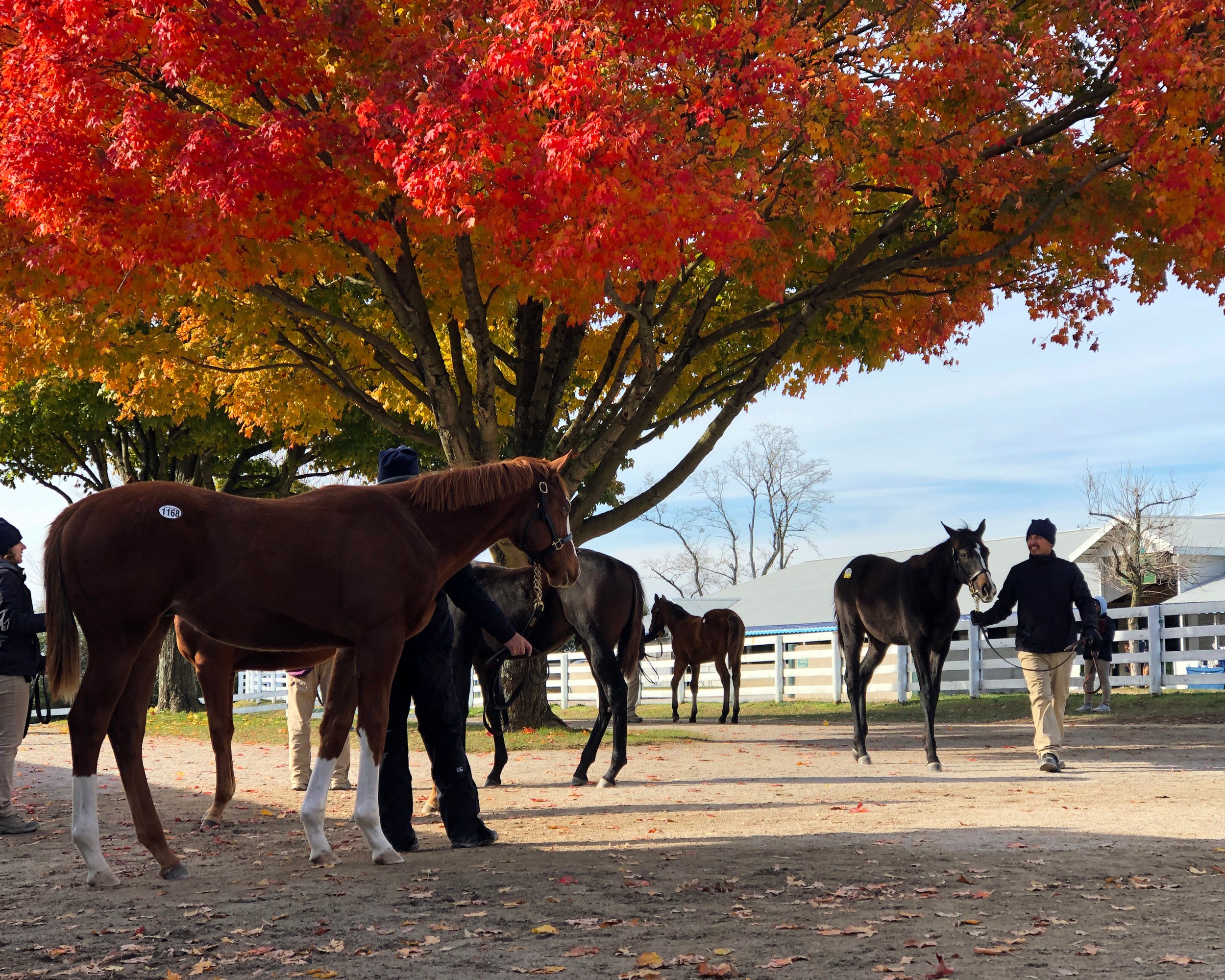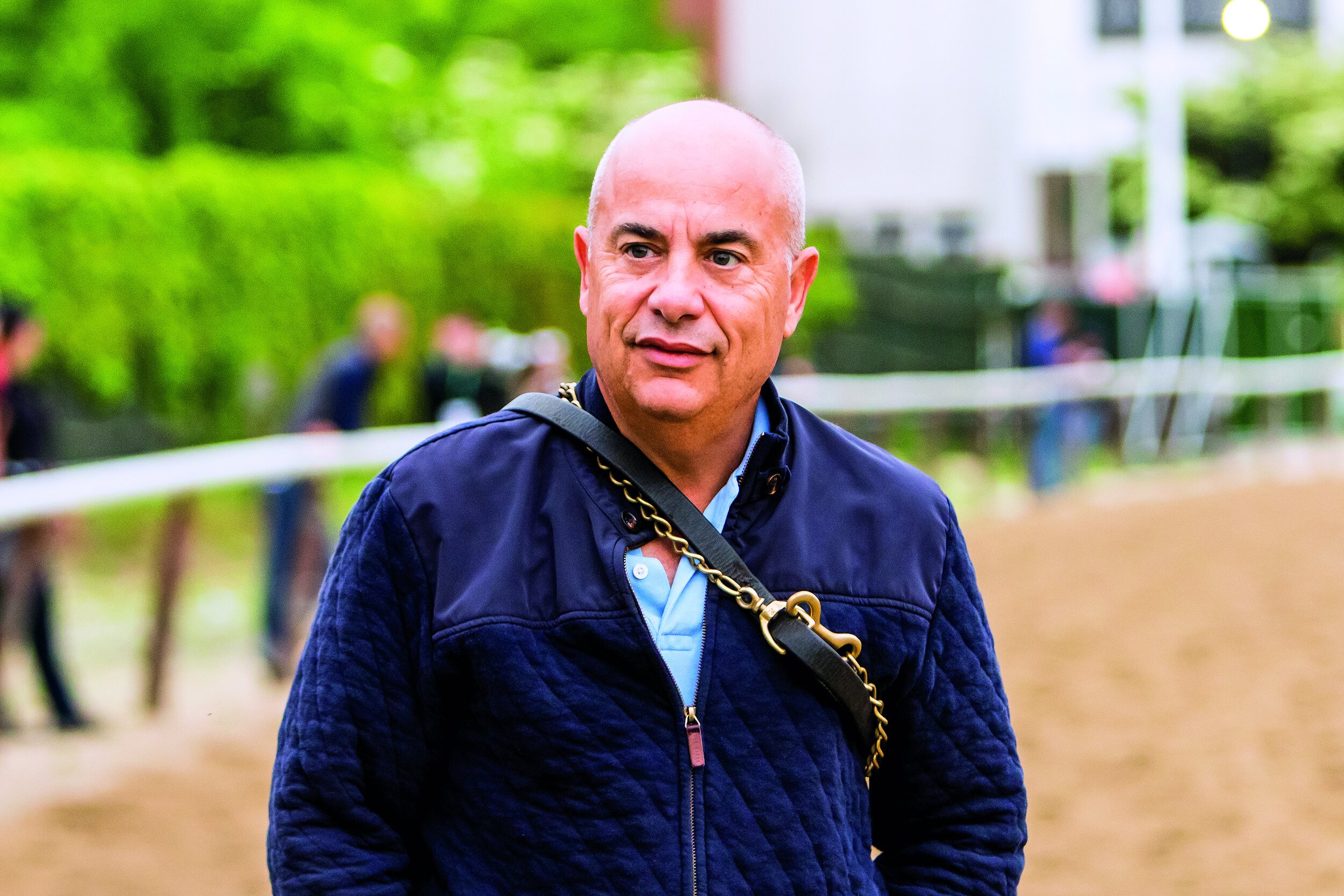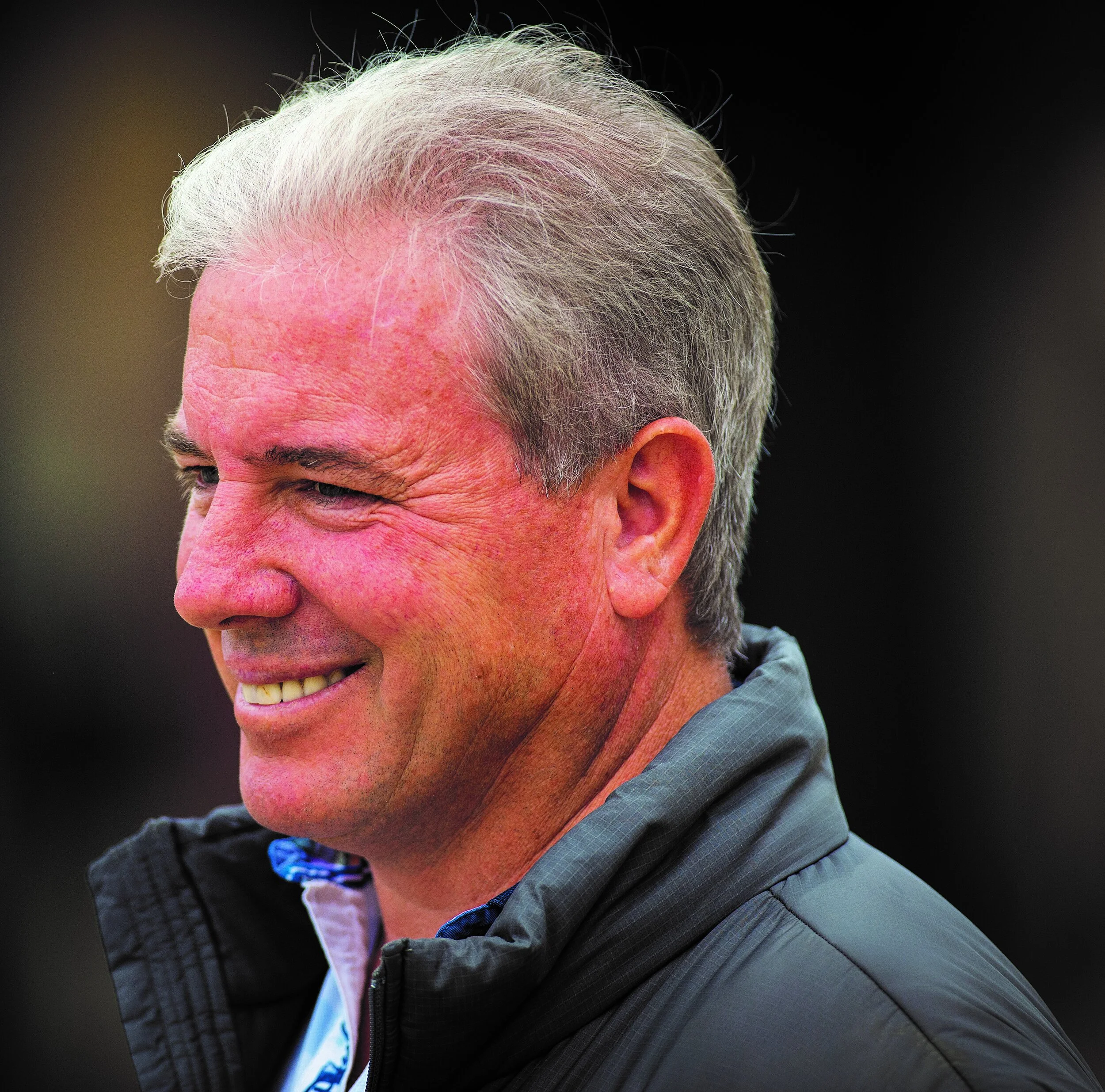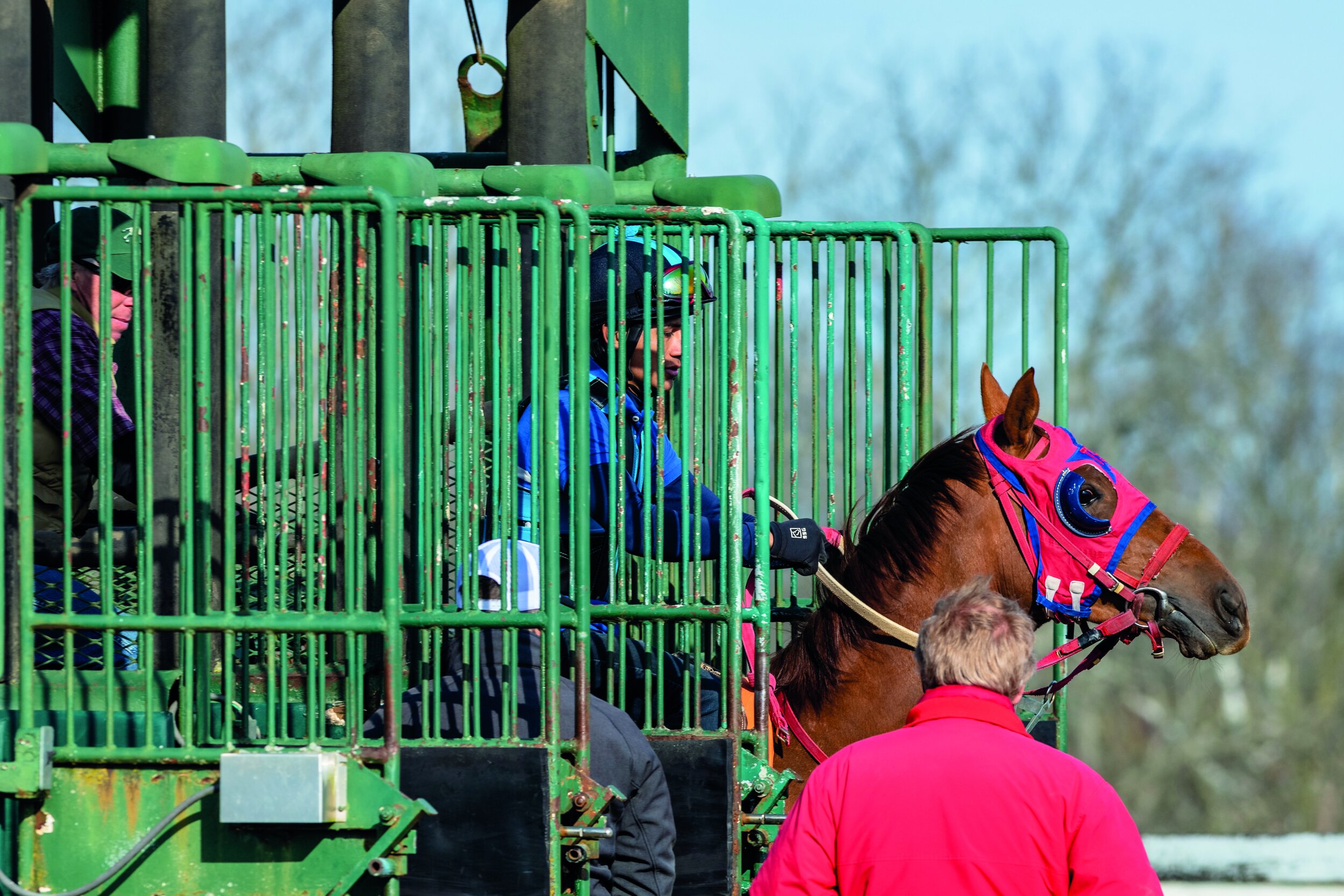From Sales Ring to Racetrack - Different opinions on bringing on the young racehorse
By Ken Snyder
The story is both funny and telling, especially as it comes from a legendary Hall of Fame trainer, courtesy of a newly minted Hall of Famer, trainer Mark Casse. Working for the late Allen Jerkens in his late teens and early 20s, Casse remembers the venerable “Giant Killer” of upset fame saying he wasn’t going to do anything with his two-year-olds because he wouldn’t have to worry about shins, sickness and all the rest. “I’m not going to train them at all at two,” Jerkens told Casse. A year later, commenting on the now three-year-olds, Jerkens said, “They did all the things they would have done at two.”
Not even a trainer as great as Jerkens can predict (or postpone) what will happen with two-year-olds, either in health or performance.
They all begin, for the most part, with fall yearling sales, most notably the August Fasig-Tipton sale in Saratoga and the Keeneland and Fasig-Tipton sales in Lexington in September and October.
Casse compares it to the NFL draft with one enormous difference: football players have a body of work—college football—to scrutinize. With horses, it’s pedigree, eye and instinct. A seven-figure Book One yearling might make the proverbial “cut list,” never even reaching the racetrack. A sale might also yield a Seattle Slew who sold for a relative pittance—$17,500 in 1975—and who etched himself into racing history as both a Triple Crown winner and legendary sire.
The “pre-season” for yearlings, to borrow again from football, is sales prep. Ninety days before a sale is the ideal time to begin prepping yearlings, according to a 10-year veteran of Thoroughbred consigning, Sarah Thompson, now an equine analyst for Eclipse Bloodstock. The minimum can be as little as 30 days.
Good looks can mean gold, and that is a variable with young horses that can be controlled somewhat. For a dark, rich coat, most yearlings (except for a few not keen on being outdoors all night) stay in the barn through summer months till seven in the evening when they are turned out into paddocks for the night. Sun can bleach coats, especially tails. (The few horses kept inside do get turn-out in the mornings but are brought in before the afternoon sun.)
Baths and grooming are daily, and as sales dates near, it ramps up with curry-combing to remove dead hair and application of hoof conditioner to improve appearance and strengthen hooves.
Conditioning is literally conditional as yearlings are not broken at this point. “There’s a lot of hand-walking. We also have automatic walkers,” said Thompson. Swimming is part of the regimen as well. “The idea there is you get the condition without the impact on the joints and bones,” she added.
Diet is generally the same for all yearlings. How a horse puts on muscle and weight (or doesn’t) and the horse’s body type can mean a tweak either to more nutrition or less.
There is little to prepare yearlings for a sales environment except for schooling on how to stand to show off conformation. The pose is standard for all horses but must be taught: left front leg forward, right slightly behind; left hind leg back, right hind slightly in front.
One surprising factor to horse sales has nothing to do with the horse, according to Thompson: “Having some of the best showmen on the grounds show [that] your horse can make you or break you. A good showman can move with that horse. Quiet hands are always a good thing, and honestly, it’s sort of the rapport between a showman and a horse.”
Once sold, it’s off to training centers and farms to determine if the yearling is worth what it cost.
Mark Casse
Casse operates his own training facility in Ocala, Florida—something he considers a huge advantage to his racing stable. Because of his success on the racetrack (career earnings are over $192 million and over $8 million in 2021 alone at the time of writing), he attracts a variety of owners, some of whom don’t have the goal you would expect: a Kentucky Derby winner. “I find out what people’s goals are. If your goals are to just have fun and win some races, then you go out and buy a speedier kind of horse that you can get ready earlier,” he said. “They’re not as expensive.” Others like John Oxley spend more, hoping for a Derby or Kentucky Oaks horse.
For a trainer of Casse’s stature, it is surprising that he also trains for one-horse owners who have paid as little as $5,000 for a horse. “I seldom turn somebody down as long as they have a passion for racing.”
Wesley Ward has built a Hall of Fame-worthy reputation with yearlings. His career win rate with two-year-olds is 24%, and at the time of writing, it was 33% for 75 starters this year. His success at Royal Ascot with “babies” has made him literally world famous. “I’ve won 12 races over there, and I think eight are two-year-old races,” he said.
He confirms what Casse says about owners’ goals. “Most of our horses are sprinters. The owners and stable managers tend to be giving me them,” he said. Ward might be minimizing accomplishments, however, as his overall win rate for horses of all ages is near the top for all trainers, a more-than- respectable 22%.
Wesley Ward
Ward isn’t protective of any “trade secrets” to account for two-year-old success. Winning is largely a matter of getting out of the gate well, for races run over distances as short as four-and-half-furlongs. “Most of my [exercise] riders that go to the gate are ex-jockeys,” he said. Again, he might be exercising excessive modesty when he said, “It’s not the trainer, but the person on their back.”
He does say he spends a lot of time “just getting the horses not scared” in gate training.
Ah, the gate—what Ward called the “big scary monster—this apparatus that we’re locking them up in.”
Everyone has their methods for gate training and, as any racing fan knows who has watched a horse balk or worse at either entering the gate or staying calm till it opens, nothing is foolproof. At his training center, Casse positions his gate where every horse every day must walk through it going and coming to the track. “That way it’s not something new to them,” he said. “After we do that for a couple of months where they’re used to it, then we move it over and change positions with it.” At that point, they go through a typical progression of having back doors closed and then front doors before breaking from the gate.
Travis Durr, owner of Webb Carroll training center in St. Matthews, South Carolina, employs a “monkey see, monkey do” principle in teaching gate work for yearlings as well as training in general. Like most every trainer of yearlings, he introduces gate work early but only a “few times a week,” unlike at Casse’s training center. Yearlings will follow a pony through initially.
An alpha male or female who will lead the pack takes it from there, showing the way for others. “If you’ve got 10 out there, you see which ones kind of want to be the boss, and which ones kind of want to lay back.”
Webb Carroll is known for exercising large sets with as many as 16 riders at work, depending on the time of year. “They’re used to being out all together. If you have a problem horse, it just makes it easier. They see all the other horses doing something, so they kind of fall right in. It’s a lot easier than if you’re getting just one to go out there.”
It is out of the gate, of course, where Thoroughbreds can earn fame and fortunes for owners. Methods in getting yearlings up to a three-eighths breeze vary between training centers and trainers. For Casse, the goal for a horse's first breeze will be 45 seconds or 15 seconds per eighth for a fall, two-year-old starter.
“A lot of times, they’ll all go in 45, but you can tell which ones it takes more of an effort to do that. That’s how they first start separating themselves.”
For Richard Budge, general manager of Margaux Farm in Midway Kentucky and former farm trainer for Winstar Farm, the first breeze will be a short sprint over a single eighth of a mile. “Then we take them up to a quarter [mile] and then three-eighths.”
Budge also separates the yearlings into early, middle and late groups. “The late group may be horses that may need a little more time or have a physical issue, so therefore you push them to a later group to break. I say the early group would obviously be the horses with a January, February, March birth date—that look physically ready to go right on with.”
Like Casse, the stopwatch is not as important to Budge as the way the horse goes about it. “If they’re doing it easily as opposed to flat out, that would be more important,” he said.
Margaux is a European-style farm, featuring a slightly uphill one-sixteenth mile straight with a Tru-Stride synthetic surface. Budge, an Englishman who has trained there, France, Brazil and the U.S., believes the combination of surface and straight track keeps yearlings more sound. A turn at the top of the straight does teach young horses to change leads.
Considering that two-year-olds are the human equivalent of 13-year-olds—arguably the toughest age for parents and teachers—trainers like Casse and Ward embrace the task of getting yearlings to the race track. Ward, in fact, expresses a preference for them. “This is what I love to do, especially the younger horses. This is what really excites me.”
And that’s a good thing—something with which Allen Jerkens might not agree…
When is a win not a win? Trainer Mark Casse has a surprising perspective on this.
First of all, his proficiency with two-year-olds is easily overlooked. His 2021 win rate with two-year-olds is 21%, and his career earnings with them are over $52 million compared to Wesley’s Ward’s career earnings of $28.3 million for the first-year starters. Most interesting, perhaps, is career earnings per start for Casse (at time of writing): $11,596 compared to Ward’s $11,065.
Success with two-year-olds is largely ignored but also improbable, considering his approach to “baby races.” “Never is it my goal to win first time out,” he said. “For the most part, it can be one of the worst things that can happen to a horse.
“A lot of times, what happens is we have a horse break his maiden first time out; and next thing you know, he’s running in stakes. At some point, no matter how fast you are, there’s going to be somebody faster than you. If you have a horse that knows nothing but to be on the lead, what if he breaks a little slow? What if something happens? I tell all my riders, the first time they ride a two-year-old for me, I’d rather be a closing fourth than a dying third. I like my horses to learn to run-by horses.
“Now, that being said, if a horse breaks running, and breaks one or two on top, they’re going to go with it.”
Jimmy Jerkens
By Bill Heller
How do you measure patience...in months waiting on a talented horse...in years waiting to go out on your own?
How about perseverance? Overcoming the loss of key clients? Fighting through heart surgery and a hip replacement?
Trainer Jimmy Jerkens, who has enjoyed the most successful run in an already successful career the past five years, sees no other way to function. Rushing horses is anathema to him. So he does the right thing with his. “You’re forced to,” he said. “You have no choice.”
Giving into lost business or personal health issues would be unnatural to him. So he fought through both. “It’s all I know how to do,” he said. “I kept working and tried hard not to lose faith. It was hard not to. I figured I’d best buckle down.”
Green Light Go winning the Gr.2 Saratoga Special
He buckled down so well that he set personal highs in earnings in 2014, topping $4 million for the first time, and he did it again in 2015 and in 2017, when his horses earned more than $5.5 million. He’s already over $3 million this year thanks to his lightly-raced six-year-old Preservationist, owned by his long-time client Centennial Farm, and his precocious two-year-old Green Light Go, owned by Stronach Stables.
It’s hard to believe that Jerkens didn’t win a single stakes in 2011 and 2012 and went through 2011, 2012 and 2013 without a graded stakes victory. Or that his stable shrunk from 40 to 12.
Looking forward to Preservationist and Green Light Go’s next starts in high-profile Gr1 stakes at Belmont Park—Preservationist in the Jockey Club Gold Cup on Sept. 28 and Green Light Go in the Champagne the following Saturday— helped him get through hip replacement surgery on Sept. 23. A year earlier, he had heart surgery when stents were inserted.
Jimmy and Shirley Jerkens
Of course, his wife Shirley (they were high school sweethearts who grew apart then reconnected 25 years later) helped him get back on his feet and tried to prevent him from doing too much too soon, which of course, he tried to do.
“You want to do right for your owners,” Jerkens said. “You want to do things right. It’s seven days a week. There’s a lot of stress. That’s what’s hard about this business. There’s no downtime unless you make time for it.”
Shirley is a physical therapist for the New York State Department of Education, with a small private practice treating 8- to 18-year-old athletes. She is an accomplished rider and gallops horses for her husband every summer.
She knows and appreciates how hard he works: “He takes no vacations. He goes back to the barn three times a day. He sees how the horses are doing at that particular moment.”
Close your eyes and you can almost see his departed father—Hall of Fame trainer Allen Jerkens—nodding in approval that his two training sons, Steve, 63, and Jimmy, 60, learned the right way to take care of their horses and the commitment and work ethic that is required before success can follow.
“I’m very proud of Jimmy,” Steve said. “He puts everything into it and he deserves any success he gets. Like my father used to say, `You got to fight it hard. You got to keep at it.’”
It’s a family trait. Jimmy and Steve have two other siblings: Jimmy’s twin sister Julie, a school teacher and author of children’s books; and their older 67-year-old brother Alan, a recently retired sportscaster for the NBC affiliate in Tulsa, Okla. “They’re all a bunch of hard workers,” Shirley said.
Jimmy didn’t spend a lot of time figuring out where he wanted to work. He knew what he wanted to do with his life at the age of 11, when he began working weekends and summers with his father and older brother. “I was a barn rat,” he said. “It was unbelievable. We worked all day. Went to the track kitchen with the other help. We worked from dawn to dusk and never gave it a second thought.”
Steve said, “We were going to the barn with my father for as long as I can remember, on weekends and summers. Always to the barn. We’ve been doing it all our lives. At an early age, we learned to take care of the horses and we enjoyed it. We loved getting horses ready for the races. It was a great life. It kept us out of trouble.”
They’d play basketball on a wooden hoop at a small farm in Huntington, Long Island, where their father kept a couple horses. “My older brother [Alan] was a pretty good player,” Steve said. My father was very competitive. We’d have touch football games after feeding behind his barn at Belmont in the parking lot. That was very competitive. Stable hands from other outfits would show up and we’d choose sides. And we all played polo at West Hills Stable. I met my wife Joan at polo.”
The first time Shirley talked with Jimmy (they both went to Walt Whitman High School in Huntington—he was two years ahead of her) was at a polo farm where she had her horse stabled. “He was there with his dad and Steve,” Shirley said. “I was 13.” They dated for five years before going separate paths. “I wanted to get out and see the world,” she said.
Twenty-five years later, they bumped into each other at a polo event in Miami. “We just got talking,” Shirley said. “I found he was split up from his wife. I was getting divorced from my husband. That was it. We had dinner at Joe’s Stone Crab. We walked through the rain. It was romantic. From then on we’ve been together.”
They married and went on a delayed honeymoon to Napa Valley, arriving on Christmas Day in 2008. “We stayed for one week,” Jimmy said. “Believe it or not, it was a little bit of downtime. The horses had shipped to Florida. It was actually a good time to go.”
He had a good time during what may be the only real vacation he’s ever taken. Shirley testified, “He did relax,” knowing how unusual that is for him.
Shirley was surprised to see a side of Jimmy that he and his father shared: “Even with all their skills and their success, they’re very humble.”
Jimmy, though, idolized his father. “Growing up and seeing my father—he was at the pinnacle of his career. WOR-TV had horse racing on the weekends. He was on almost every weekend. I was so proud of him, seeing his horses run on television. You get so proud of it, you wanted to be a bigger part of it. My father had such devotion to his horses. He was my hero. I guess it just kind of rubbed off. I wanted him to be proud of me. I knew I wanted to do it.”
Steve saw his younger brother’s passion for horses at an early age. “He was always a student of the game,” Steve said. “He read books about breeding. He had a great memory about horses. Worked hard at it. Even galloped horses.”
One Saturday afternoon at Saratoga was one of the highlights of both Jimmy and Steve’s lives. They watched from the backstretch as their horse Onion stepped into the starting gate to tackle Secretariat in the 1973 Whitney Stakes. “That was like a fantasy,” Jimmy said. “We just didn’t know what to expect. He (Onion) was super sharp. He broke the track record four days earlier. We were hoping he’d get a check.”
But there was an obstacle for Steve and Jimmy. The toteboard blocked their view of part of the stretch. “We saw him in front, then we were blocked by the toteboard a little bit,” Steve said. “Sure enough, he was still in front. It was great—some thrill.”
Jimmy said, “We just couldn’t believe that. I’ll remember that for the rest of my life. We jumped up and down like idiots. We just beat one of the best horses to ever live with a homebred gelding. That wasn’t supposed to happen.”
They celebrated…(ready for this?) By playing touch football!
Jimmy’s hoop days are long gone, but his passion for his horses continues unabated. And it served him well while working for his father and then finally, he went on his own in December 1997, two months before his 39th birthday. “It was my father’s idea,” Jimmy said. “I had just gotten divorced, and I was pretty down. He was trying to pull me out of a little funk. He said, `Why don’t you go out on your own?’ He had an owner, Peter Blum, who started my brother out. He said, `Take his six horses that I have. Maybe Mrs. DuPont will have a couple. Earl Mack possibly.’ I said, ‘Yeah, it sounds good.’ That’s what we did.”
Jimmy’s success was immediate. In his first full year on his own in 1998, he won 35 of 186 starts and his horses earned $1.4 million. Not bad for a 39-year-old rookie. He topped $1 million for 13 straight years before his stable took a mighty hit. Actually two hits.
With Jimmy as his trainer, Edward Evans’ Quality Road won the 2009 Gr2 Fountain of Youth and the Gr1 Florida Derby. That made Evans’ decision to take all his horses from Jimmy hard to fathom. Then another long-time client, Susan Moore, took her horses from him. “He went from 40 horses to 12,” Shirley said.








